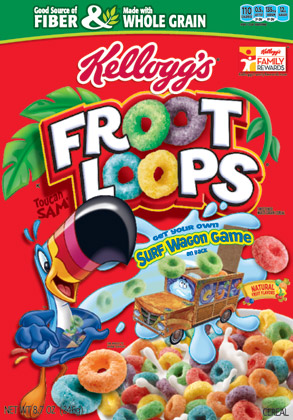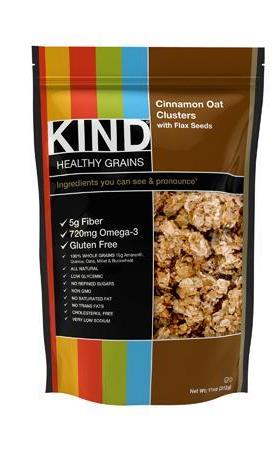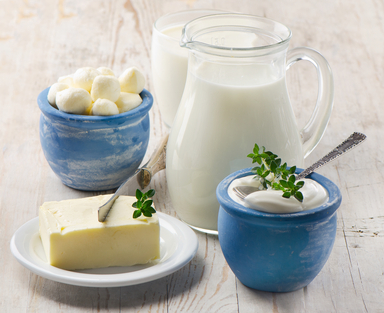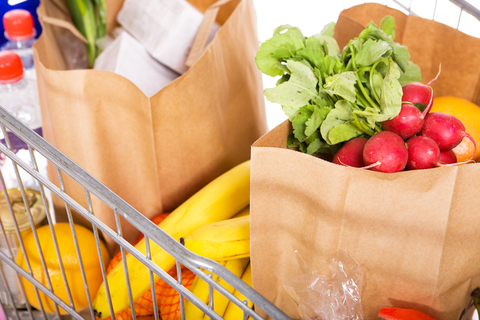Guyside. It’s spring! (It’s spring?!) Take advantage.

These t’ai chi practitioners in Beijing have the right idea about spring – get outside and let it buoy you up.
I am not a giant fan of winter. So even a spring as tentative and tantalizing as 2014’s is a welcome thing. You can feel the sun’s warmth on your face, and maybe even on your bare arms. Things begin to bud out in the gardens, early flowers show themselves, and everything seems new again. It’s wonderful.
If you feel the way I do, why not take this opportunity to make a fresh start on some personal care? Here are some ideas:
- I have a fairly substantial bike ride coming up, so that means that I am getting out on the road more and more to get the legs in shape. In my city of Ottawa, there are lots of 12-month cyclists, but I’m not one of them. I ride inside, but that’s never quite the same as being out on the road.
- I also find myself walking to places that a month or two ago I would have driven, because it’s not boneshatteringly cold out and it’s pleasant. Are there types of exercise that winter makes more difficult that you can start doing (or restart?)
- We’re lucky enough to have a garden and a patio, so don’t discount the raking, hauling, sowing, weeding, gopher-chasing, and other outdoor things that you have to do to get your garden started. If you’re reading this where things are far beyond our early garden phase: I hate you.
- If you’ve been relying on comfort foods and root vegetables (or worse, sports on TV and chicken wings!) to get you through the winter, start thinking about finding leafier greens to eat, from the closer the better. Farmer’s markets start opening up this time of year, offering us fresher produce and the opportunity to revisit our diets.
- Relax. Whether it’s on my own patio or whether I’m at a coffeeshop or pub, patio season is a wonderful thing. Take opportunities to sit, unplug from the devices, be with yourself. Or be with other human beings, enjoying the time of year. Make the most of the season as an excuse to resume social life.
The businessman Sir John Templeton was once asked when the best time to invest was. His answer was “when you have money.” The best time to invest time and energy in yourself is when you have time and energy. Let the changing season fill you up with some of that energy, and make the time. You’ll be thankful.
Photo: creative-commons licenced by Flickr user Faungg’s Photo
Read MoreMirror, mirror, on Guyside’s wall…
 I recently came upon a photo of me that was about 10 years old or so. I didn’t think much of it, but then I took a closer look to see if I could spot the telltale signs of aging in it. It was hard. I’m a little heavier now than I was then (about 192 compared to about 185); there are more than a few gray hairs in my facial hair, but not much on top; I couldn’t see the advance of wrinkles.
I recently came upon a photo of me that was about 10 years old or so. I didn’t think much of it, but then I took a closer look to see if I could spot the telltale signs of aging in it. It was hard. I’m a little heavier now than I was then (about 192 compared to about 185); there are more than a few gray hairs in my facial hair, but not much on top; I couldn’t see the advance of wrinkles.
Trust me. I am not Dorian Gray. But I think that guys are able to see exactly what they want to see in mirrors or photographs. A classic Canadian folk song called “Lies” is about a woman confronting her face in the mirror, with one couplet: “She shakes off the bitter web she wove / Gently puts the mirror face down by the stove.” From the outside, at least, I think women look at themselves and see flaws, while men look at themselves and see an idealized version of themselves.
I don’t think I have to argue that for many women, body image is a big problem. But I want to argue that the male tendency to ignore reality isn’t an asset. If we “can’t see” the toll that time and our choices take on our body, then men could be opening ourselves up to health issues.
I was recently part of an online discussion where a mother was talking about how quickly her daughter would look at herself and wonder if she was too fat (this in elementary school!), while the girl’s quite-average-shaped younger brother would come to his mother and demand she demonstrate awe at his huge biceps and muscles! While I suspect that everyone in adolescence is hypersensitive to body issues (why don’t my boobs look like hers, why can’t I get rid of these pimples, why am I 6’1″ and weigh under 140 — that last one was me, by the way), it’s disconcerting to think that even in early childhood, there are already seeds of dissatisfaction with who we are, and the willingness to rely on our fantasy vision of ourselves rather than to simply acknowledge reality.
Since the 1980s, when I was thin enough, as my dad used to say, “to have to run around in the shower to get wet,” I’ve put on about 55 pounds. I needed some of that. But maybe not all of that. Even my idealized eyes can see that. I’ll never be a bodybuilder, never be “musclebound.” Given the raw material, I would have to either become an utter gym rat, or I’d end up using dangerous methods like steroids to achieve some level of muscularity. And I’m not willing to risk my health for an image. I like feeling fit, I like feeling toned. But for me, the “Men’s Health” six-pack or the arms of a pro wrestler aren’t worth it.
But the question then becomes: if you recognize the need for change, then how to make that change. Next week, I’ll be talking about cosmetic surgery for men.
(photo CC-licenced by Flickr user Michele di Trani)
Read MoreHow to eat processed food. Guest Post by Danielle Omar, MS, RD
My friend and colleague Danielle Omar has been a contributor to Flashfree for some time now. When I read her post “How to Eat Processed Food” on her Food Confidence blog, I knew that I wanted to share it here. Sure, it’s odd that a registered dietician is actually sharing tips on how to eat processed foods versus why you need to avoid processed food at all cost, however, Danielle has taken a unique approach that regular readers of Flashfree and Guyside will appreciate.
Thanks for allowing me to cross-post this terrific information, Danielle!
I eat processed food. And so do you. It’s almost impossible not to. Food is “processed” as a matter of course to get it from the farm (or factory) to your table. But wait, if you’ve done my detox or worked with me privately you know I’m all about clean eating and avoiding processed food.
So what’s the deal? Well, let’s start with what the word processed really means. Aside from what you can just pick and eat, most foods are processed in some way. At the same time, there are foods that people call “healthy” that to me are so processed they’re not even food.
Look at heart healthy olive oil. It needs to be processed in order for the oil to be extracted from it, right? So how do we differentiate between the good-processed and the bad-processed foods? You might say that a good-processed oil is one that is naturally pressed and unrefined. A bad-processed oil is one that is chemically pressed and refined. Because we live in choice-overload at the grocery store it can be confusing. My clients send me emails all the time asking are these crackers better than those? Which yogurt is better? And one of my favorites, would YOU eat this?
So let’s clear up the confusion about the “P” word, starting with what I consider to be good-processed and bad-processed foods. Oh, and I can’t speak to every single food out there so here’s just a sampling of whatI eat.
Good-processed foods
- bagged veggies (yes, those are processed)
- frozen fruit and plain frozen veggies
- miso
- oils (as noted above)
- raw or dry roasted nuts and seeds (I’m not talking Planters)
- oats and plain oatmeal
- single whole grains (i.e., quinoa, millet, wild rice, etc.)
- canned beans (BPA-free like Eden foods) OR boxed beans (Whole Foods has these)
- tuna and salmon in a can (high quality stuff like Vital Choice, Tonnino, Wild Planet)
- dried fruit (no sugar added)
- Plain and organic yogurt (this is a sketchy area; lots of good yogurt that’s not organic or plain)
- goat cheese
- salsa
- granola (like KIND, Purely Elizabeth)
- crisp bread crackers (like WASA, Orgran, Finncrisp)
- energy bars (like Lara, KIND, 22Days)
I’ve got a bit of a hierarchy going with the good-processed foods. For one, I look for minimally processed items. These potentially boxed or bagged foods contain ingredients that I recognize and that I would use at home to prepare the food myself. Yes, this means that I take a bit more time while shopping to read the ingredients. I don’t mind this because the grocery store is my partner in eating clean. It also means that just because a food is gluten-free or is made with quinoa or greens — that doesn’t mean it’s clean eats. Take, for example, this roasted garlic chicken frozen dinner, a gluten-free gem made with spinach from Lean Cuisine.
Ingredients: Water, cooked chicken tenderloin (chicken tenderloins, water, seasoning), modified corn starch, sugar, potassium chloride, yeast extract, dextrose, spice, onion powder, garlic powder, paprika), soybean oil, isolated soy protein, sodium phosphates), spinach, skim milk, onions, carrots, 2% or less of modified corn starch, cheese flavor (cultured milk, salt, enzymes), soybean oil, white white, butterfat, Asiago cheese, salt, cheese flavor (cheddar cheese, cultured milk, salt, enzymes), water, salt, enzymes, cultures, phosphoric acid, xantham gum, seasoning, (autolyzed extract, flavors, water, chicken powder, chicken fat, sugar, sodium lactate, sodium, phosphate lactic acid) potassium chloride, roasted garlic, dehydrated onions, basil, enzyme modified Parmesan cheese, puree, whey, yeast extract, whey, carrageenan, spices, caramel color, chicken fat flavor, cultured whey, turmeric.
I don’t cook with many of these ingredients. For me, I just don’t want the added chemicals (read: toxins) clogging up my cells. I’ve got enough of those coming in from just living and breathing. I’m thinking you probably don’t either. So my answer to this is simple: I don’t buy the Lean Cuisine. Instead, I buy some chicken breasts, sprinkle on some spices, and cook at 375 for about 25 minutes. It really is that easy. I can do it and I don’t even eat chicken.
Bad-Processed Foods
The list of these foods is long and I will not even try to do it justice here. I will just say that these foods areextensively processed in order to be edible, they are not found as is in nature, or they are foods processed using chemicals that I don’t want to be eating. I’m talking mostly about GMOs, additives, preservatives and artificial flavorings. Now some in the food industry might argue that the healthiest food in the world is processed. And that food fortification plays a large role in meeting our nutrient needs. And that processing helps enhance and preserve food quality. All of that may be true. Whole grains are processed and I encourage you to eat them. However, you can get your whole grains in their natural state (see my good-processed list above). You don’t have to buy into this (yes, this is an extreme example):
 Ingredients: Sugar, corn flour blend (whole grain yellow corn flour, degerminated yellow corn flour), wheat flour, whole grain oat flour, oat fiber, soluble corn fiber, contains 2% or less of partially hydrogenated vegetable oil (coconut, soybean and/or cottonseed), salt, red 40, natural flavor, blue 2, turmeric color, yellow 6, annatto color, blue 1, BHT , Vitamin C (sodium ascorbate and ascorbic acid), niacinamide, reduced iron, zinc oxide, vitamin B6 (pyridoxine hydrochloride), vitamin B2 (riboflavin), vitamin B1 (thiamin hydrochloride), vitamin A palmitate, folic acid, vitamin D, vitamin B12.
Ingredients: Sugar, corn flour blend (whole grain yellow corn flour, degerminated yellow corn flour), wheat flour, whole grain oat flour, oat fiber, soluble corn fiber, contains 2% or less of partially hydrogenated vegetable oil (coconut, soybean and/or cottonseed), salt, red 40, natural flavor, blue 2, turmeric color, yellow 6, annatto color, blue 1, BHT , Vitamin C (sodium ascorbate and ascorbic acid), niacinamide, reduced iron, zinc oxide, vitamin B6 (pyridoxine hydrochloride), vitamin B2 (riboflavin), vitamin B1 (thiamin hydrochloride), vitamin A palmitate, folic acid, vitamin D, vitamin B12.
All of you Froot Loops lovers are cringing right now, aren’t you? Please don’t be fooled into thinking that a bowl of bad-processed cereal in the morning is good for you because it has whole grains in it. Because it also has red 40 and blue 2. Oh, and yellow 6. And blue 1.
 If whole grains are what you’re after, it’s save to say that this would be a cleaner, good-processed choice:
If whole grains are what you’re after, it’s save to say that this would be a cleaner, good-processed choice:
Ingredients: Whole grains (gluten free oats, brown rice, buckwheat, amaranth, millet, quinoa), evaporated cane juice, flax seeds, chicory root fiber, canola oil, molasses, cinnamon, sea salt, Vitamin E
Processed food does not have to be a curse on society. It can be a part of a healthy, clean eating lifestyle — if you choose good-processed foods most of the time. But to me, eating clean is about more than just choosing the right nutrients on an ingredient list. It’s about how your food is prepared. It’s about eating food mostly in it’s natural state.
Yes, processed food is convenient and sometimes necessary, but preparing your own food is a necessity, too. One that takes a little more time, a little more confidence and a little more knowledge of cooking than does tearing open and bag or box and digging in. But I promise, the more you do it, the better you’ll get at it, and the more you’ll appreciate it.
Read MoreDairy. Do? Or, Don’t?
 It’s a new year, we’re past the holidays and those resolutions to eat better may be confusing. Where do you start? And what should you give up first? Sugar? Grain products? Fats?
It’s a new year, we’re past the holidays and those resolutions to eat better may be confusing. Where do you start? And what should you give up first? Sugar? Grain products? Fats?
Whoa! Hold on there, because what I’m about to share may rock your world when it comes to thinking about fats.
When I think about fatty foods, one of the first things I think about are dairy products. Yet, research shows that dairy intake is below the recommended level, despite well-established recommendations and of course, their contribution to bone health. What’s more, it appears that eating dairy products may actually lower the risk for metabolic syndrome — the constellation of conditions such as obesity, glucose intolerance, high blood pressure and high cholesterol — that together lead to diabetes, coronary artery disease and stroke. A scary related fact is that metabolic syndrome affects more than a third of women after the age of 55, and has been linked with hormonal changes that occur during menopause (check out the metabolic syndrome posts in the Archives).
In a review in the January online edition of Maturitas, Canadian researchers share a few important facts about dairy products and why you may want to reconsider their role in your diet:
- Obesity. Contrary to popular belief, eating dairy may actually protect against weight gain. While this appears to be counterintuitive, research has shown that dairy may have a beneficial effect on the way that the body breaks down sugar and converts it to fat for storage, and instead, promote the breakdown of fats. Calcium also appears to help the body break down large fat molecules so that the fat is more readily available for energy. And, whey protein appears to help preserve muscle, while lactose and dairy proteins may boost the feeling of fullness. What’s more, eating dairy may actually help reduce that tire around your midsection. However, like any dietary rule of thumb, too much is too much. Dairy intake should be limited to two to three servings a day and products should be consumed along with a balanced diet.
- Blood sugar. While the evidence is still being teased out, dairy may help to keep blood sugar levels in check by preventing insulin sensitivity, that is, balancing the way that insulin is produced and the cells’ reaction to it (when cells lose their sensitivity to insulin, diabetes results).
- Fat in, fat out. Dairy products have long been linked to saturated fat, which has been shown to increase the risk for heart disease. Yet, in moderation, whole fat dairy may actually help balance cholesterol and blood fats levels and even boost good cholesterol – HDL – levels. Still, this is not a free pass for eating all the whole dairy products that your heart desires; everything in moderation. In other words, if your daily intake includes a serving of whole dairy, you need to compensate elsewhere in your diet.
- Blood pressure. Data suggest that consumption of 3 servings a day of low-fat dairy products may actually reduce the risk of high blood pressure by roughly 16%. The best choices appear to be ‘fluid dairy’ (i.e. milk and yogurt) rather than cheese. While researchers are uncertain how dairy yields a protective effect on blood pressure, it may be due to their action on the cells that line blood and lymphatic vessels. Among their various function, these cells, better known as the endothelium, help keep the blood pressure in check.
- Inflammation. Increasingly, low grade inflammation in the body is being linked to disease. In fact, it is considered a key factor in the development and progression of metabolic syndrome. Certain components in dairy may actually reduce blood markers of oxidative stress and inflammation.
I asked my friend and colleague, and registered dietician/nutritionist extraordinaire Danielle Omar to weigh in on dairy and whether there is any advantage to using low fat versus full fat products. She says that she’s “not a huge fan of fat free dairy products, especially skim milk. The fat in milk helps with the absorption of fat soluble vitamins (A, D, E, K) and other nutrients that can only be assimilated into the body when eaten with fat,” adding that it’s likely that “choosing more fat free vs whole fat dairy will cause weight gain over time.” The reason? People tend to eat more low- versus full-fat dairy before they are satisfied. Moreover, some of the low-fat dairy products are very high in sugar and without fat to slow digestion can cause insulin spikes/hunger crashes — can lead to overeating. Danielle also says that “people tend to overeat low-fat foods because they think they are being “healthy.”
Dairy? Do! Just be certain to balance it out with other healthy items in your diet.
Read MoreGuyside: Don’t let winter weigh you down

There may not be a five-mile skating rink like Ottawa’s Rideau Canal in your town. But there are lots of opportunities for physical activity, even when the days are short and temperatures drop.
Where I live, this is the darkest time of the year. Instead of a beautiful sunrise when I wake up, it’s dark. When my partner is walking home from her office, it’s also dark. The layers of clothing get added to. The gloves and the puffy jackets come out of the basement. And the road bike gets brought inside and put on the trainer. Even though the winter solstice in December marks the is a welcome “bottom” to the year, before and after, the days are dark and short and cold.
When I was a kid, winter was the time for snow forts and snowmen and skating in the community rink while Anne Murray tunes scratched over the PA system.
Now, winter is the time of year where I have to shovel the driveway, wear heavy boots that I don’t like, and the time when I can’t ride (I know I could ride, but I’ve never been a winter cyclist type).
When it’s snowy and cold, It’s easy to find that hot new series to watch, to light a fire, pop some popcorn, and wait for spring. It’s just too tempting to simply hibernate in the house over the winter months. And it’s also a terrible idea when it comes to men’s health.
In Canada, studies show that people are nearly twice as likely to participate in any physical activity in summer compared to winter. And if you look at the sporting activities Canadians participate in, only two of the top 10 are winter sports. In Canada, it shouldn’t be surprising to anyone that ice hockey bumps up winter sports participation numbers, and even with the burgeoning popularity of women’s hockey it’s still predominantly male.
And the irony of all this is that when you exercise outdoes in the winter you burn up to 31% more calories than in warmer weather.
So, some tips for guys like me who don’t play hockey or ski for getting out there:
- “There’s no bad weather, just bad clothing” is an a age-old proverb. So if you’re going to invest, invest in good layers of clothing. Go to a store that specializes in outdoor gear for winter so that you can benefit from knowledgeable staff. Fitness magazine has some tips on how to dress for outdoor exercise.
- If you’re a beer-league hockey player, don’t just rely on the hockey to keep you fit. The start-stop nature of hockey can be dangerous for people who don’t have a good base of fitness.
- Some sports — hockey and skiing come to mind — can be pricey to participate in. But skates and snowshoes are cheaper than fully kitting out for playing hockey or going downhill, and walking (with appropriate footwear that will keep you stable) is the cheapest form of all. I live in Ottawa, where for several weeks each year the Rideau Canal turns into a free five-mile skating rink (your hot chocolate will cost you, though). Also, rent before you buy if you aren’t sure if you’re going to stick to a given activity.
- Find a buddy. There will be times when you can’t drag your own sorry butt out for that workout, which is when you need the nagging, cajoling, and potential bribery of a friend to get you going. Use that help, and offer it to your workout buddy.
- If you just can’t stand winter, then bring your sport indoors. My road bike is hooked up to a trainer, so I have the opportunity to ride inside. Other people go to spinning classes to benefit from the motivation of others suffering around them (N.B.: One discovery from spinning — all that sweat that evaporates when you’re riding the bike outside turns into a puddle beneath the bike when you spin. Be warned.)
- Even if you don’t hit the gym in summer, many will offer “winter membership” or monthly memberships.
If your tendency, like mine, is to go to ground when exercising is no longer just a matter of tossing on a t-shirt, shorts, and going, then you, like me, have to just work a little harder to not give in. Besides, drinking that cocoa will feel SO much better if you skated five miles to get it.
Read MoreThe path to healthy aging is paved with a healthy diet
Ladies, listen up! Have you heard the adage ‘a ripe old age?’ Well, researchers involved in the ongoing Nurses Health Study are reporting that an important key to healthy aging is diet. However, it’s not just any diet so before you convince yourselves that you’ve won the golden ticket, let me share that the focus is on modified Mediterranean, i.e. a diet rich in plant foods, whole grains, fish or omega-3 polyunsaturated fatty acids, a moderate intake of alcohol and a lower intake of red and processed meats.
For decades, experts have been sharing that people that follow a strict Mediterranean diet die less often from heart disease and cancer, have lower rates of stroke, cognitive impairment and depression and overall possess improved physical well-being and functioning. However, questions have remained with regard both to timing and also the exact dietary patterns.
Fortunately, a thorough review of dietary reports provided over a 15 year period by 10,670 women in their 50s and 60s shows that commitment to healthy eating in midlife provides women with a 40% greater likelihood of healthy aging.
So, what does ‘healthy aging’ mean exactly?
The researchers report that for the most part, and compared to ‘usual agers,’ healthy agers were free from chronic disease, were less likely to be obese and tended to suffer less from high blood pressure and high cholesterol. They also had fewer cognitive, physical or mental health issues or limitations. Most importantly, the benefits relied upon the ‘best of both worlds dietary habits,” i.e. a combination of an ‘alternative healthy eating index,’ (i.e. greater intake of veggies, less potatoes, fruits (excluding juice), whole grains, nuts, legumes, polyunsaturated fats and a lower intake of red or processed meats, juices, sugar, trans fats and sodium) and a traditional Mediterranean diet (i.e. veggies (excluding potatoes), fruits, nuts, whole grains, legumes, fish and monounsaturated fats, and a lower intake of red or processed meats and alcohol), which was found to boost health years later.
In addition to diet, another important takeaway from this information is the importance of the midlife time point: starting out on a healthy course in midlife predicted the likelihood of healthy aging, good health and overall well-being. The conclusion? No time like the present to make important dietary changes.
Read More








